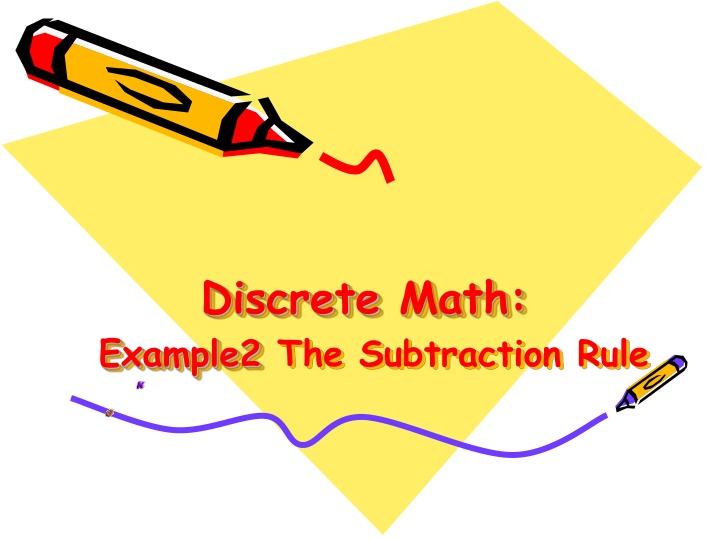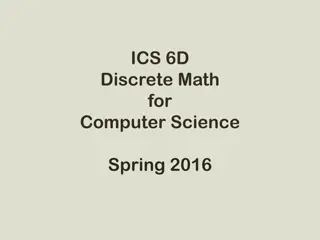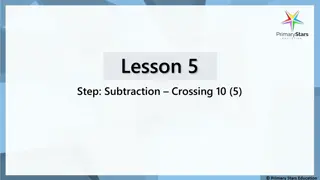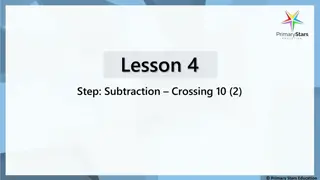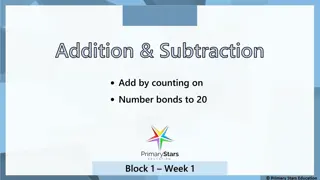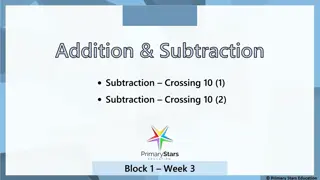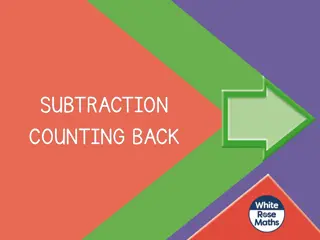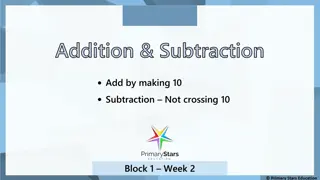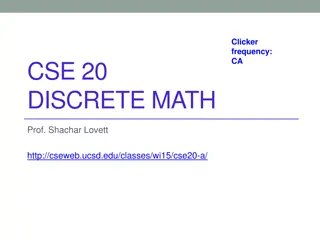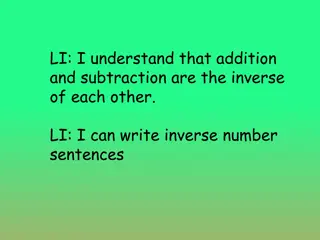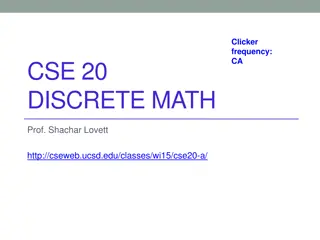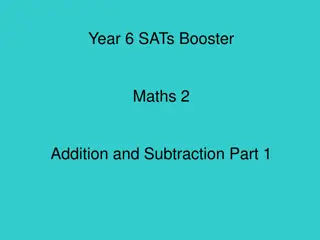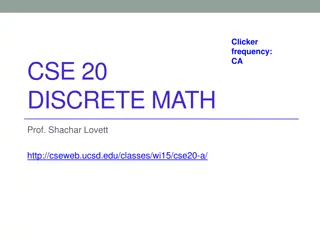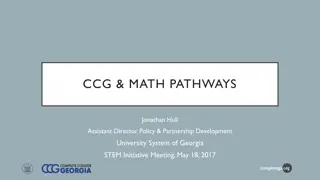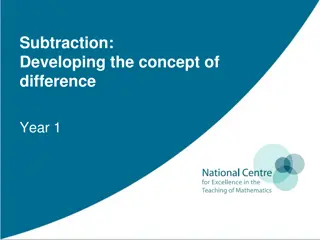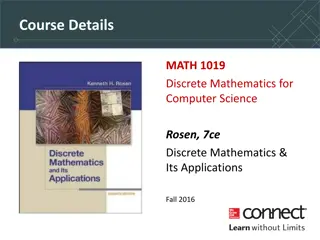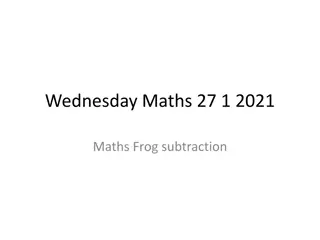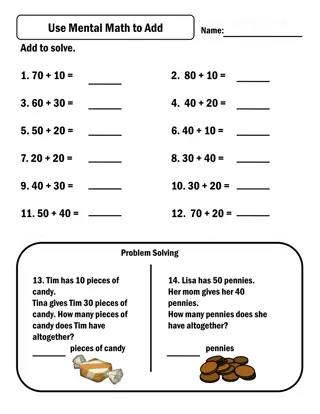Example of The Subtraction Rule in Discrete Math
A computer company received 350 job applications from computer graduates, with 220 majoring in computer science, 147 in business, and 51 in both. This example illustrates the use of the Subtraction Rule to find the number of applicants who majored neither in computer science nor in business. By subtracting the number of students who majored in either computer science or business (or both) from the total applicants, we find that 34 applicants majored in neither field.
Download Presentation

Please find below an Image/Link to download the presentation.
The content on the website is provided AS IS for your information and personal use only. It may not be sold, licensed, or shared on other websites without obtaining consent from the author.If you encounter any issues during the download, it is possible that the publisher has removed the file from their server.
You are allowed to download the files provided on this website for personal or commercial use, subject to the condition that they are used lawfully. All files are the property of their respective owners.
The content on the website is provided AS IS for your information and personal use only. It may not be sold, licensed, or shared on other websites without obtaining consent from the author.
E N D
Presentation Transcript
Discrete Math: Example2 The Subtraction Rule
Example 2 of The Subtraction Rule A computer company receives 350 applications from computer graduates for a job planning a line of new Web servers. Suppose that 220 of these applicants majored in computer science, 147 majored in business, and 51 majored both in computer science and in business. How many of these applicants majored neither in computer science nor in business?
Solution To find the number of these applicants who majored neither in computer science nor in business, we can subtract the number of students who majored either in computer science or in business (or both) from the total number of applicants. Let A1 be the set of students who majored in computer science and A2 the set of students who majored in business. Then A1 A2 is the set of students who majored in computer science or business (or both), and A1 A2 is the set of students who majored both in computer science and in business. By the subtraction rule the number of students who majored either in computer science or in business (or both) equals |A1 A2|=|A1|+|A2| |A1 A2|=220+147 51=316. We conclude that 350 316 = 34 of the applicants majored neither in computer science nor in business.
References Discrete Mathematics and Its Applications, McGraw-Hill; 7th edition (June 26, 2006). Kenneth Rosen Discrete Mathematics An Open Introduction, 2nd edition. Oscar Levin A Short Course in Discrete Mathematics, 01 Dec 2004, Edward Bender & S. Gill Williamson
